Thingiverse
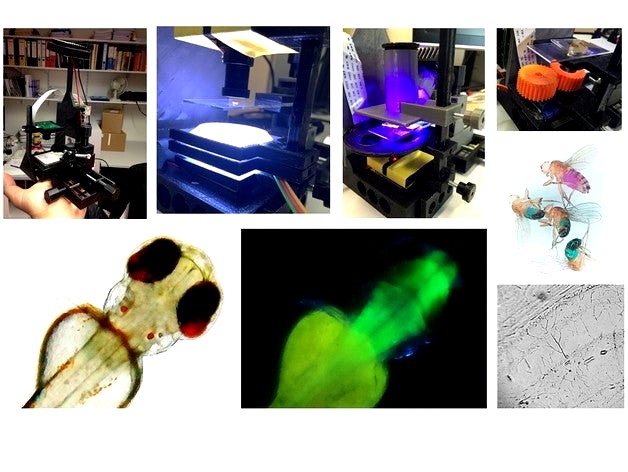
The 100 $ lab: Fluorescence microscope & behavioural tracker for optogenetics by BadenLab
by Thingiverse
Last crawled date: 2 years, 12 months ago
Note: Any tips will go straight to our charity "TReND in Africa" (www.trendinafrica.org) which is dedicated to fostering university level science education on the African continent!
// update April 2017 - the full design is now formally published on bioRxiv: http://biorxiv.org/content/early/2017/03/31/122812
// note update v29 in scad (5th Aug 2016), has lower tolerance for all slidy bits to work well on an ultimaker 2. also the size of the PCB slot has expanded to reflect the latest iteration of that. The STL arrangements are still from version 26.
The 100$ lab: A 3-D printable open source platform for fluorescence microscopy, optogenetics and accurate temperature control during behaviour of zebrafish, Drosophila and C. elegans.
in collaboration with Andre Maia Chagas (ID: iamchagas) Lucia L Prieto Godino (ID: lprietog) and A Arrenberg
Hack-a-day link: https://hackaday.io/project/5059-flypi
Link on my page, including a work-in-progress manuscript + manual:http://open-labware.net/projects/flypi/
We call it "FlyPi", as it is based on a Raspberry Pi, and was originally intended for work with Drosophila (fruit flies). However, also without flies it is a very useful tool, e.g. for science teaching.
A Raspberry Pi 2 with adjustable focus RPi Camera module serves as the basic imaging unit. A custom Arduino Nano / PCB breakout allows flexible attachment and software control of a range of sensors and actuators. By default, it controls a bunch of LEDs for lighting, fluorescence excitation and optogenetic stimulation as well as a Peltier element and thermistor for accurate temperature control. In addition, servo motors and other actuators can be attached. All mechanics are 3D printed. A custom Python3 GUI controls both the RPiCamera and all peripherals through the Arduino.
As can be seen in the preliminary figures included, the system resolves things down to the size of single red blood cells and gives fairly descent GFP-based fluorescence images. Optogenetic stimulation of ChRII and ReaChR works, and we are currently optimising out Peltier control system (it overheats too quickly).
Notably, the videos don't do it justice - youtube kills the high resolution, both temporal and spatial, and introduces unfortunate compression artifacts. Original videos taken are crisp 5MP at 15 Hz, and go up to 90 Hz at x4 binning.
We aim to formally publish this in a scientific outlet in the near future, together with adequate documentation to build your own. The system can be assembled from off-the-shelf components that total ~100 $ (hence 100$ lab...). All plans & code are fully open. For now, however it's very much a work in progress and we are still working out the kinks... but do watch this space!
Also, do check out our recent publication on 3D printing lab equipment. http://journals.plos.org/plosbiology/article?id=10.1371/journal.pbio.1002086
Finally, do check out our Science & Africa NGO:
http://trendinafrica.org/
Here, amongst other things, we aim to implement these types of designs in science education and research on the African continent.
Andre's Site: http://openeuroscience.com/
Some videos:
Overview: http://youtu.be/T9DAaXVszYQ
Motorised focus: http://youtu.be/nKvuao8ENtA
// update April 2017 - the full design is now formally published on bioRxiv: http://biorxiv.org/content/early/2017/03/31/122812
// note update v29 in scad (5th Aug 2016), has lower tolerance for all slidy bits to work well on an ultimaker 2. also the size of the PCB slot has expanded to reflect the latest iteration of that. The STL arrangements are still from version 26.
The 100$ lab: A 3-D printable open source platform for fluorescence microscopy, optogenetics and accurate temperature control during behaviour of zebrafish, Drosophila and C. elegans.
in collaboration with Andre Maia Chagas (ID: iamchagas) Lucia L Prieto Godino (ID: lprietog) and A Arrenberg
Hack-a-day link: https://hackaday.io/project/5059-flypi
Link on my page, including a work-in-progress manuscript + manual:http://open-labware.net/projects/flypi/
We call it "FlyPi", as it is based on a Raspberry Pi, and was originally intended for work with Drosophila (fruit flies). However, also without flies it is a very useful tool, e.g. for science teaching.
A Raspberry Pi 2 with adjustable focus RPi Camera module serves as the basic imaging unit. A custom Arduino Nano / PCB breakout allows flexible attachment and software control of a range of sensors and actuators. By default, it controls a bunch of LEDs for lighting, fluorescence excitation and optogenetic stimulation as well as a Peltier element and thermistor for accurate temperature control. In addition, servo motors and other actuators can be attached. All mechanics are 3D printed. A custom Python3 GUI controls both the RPiCamera and all peripherals through the Arduino.
As can be seen in the preliminary figures included, the system resolves things down to the size of single red blood cells and gives fairly descent GFP-based fluorescence images. Optogenetic stimulation of ChRII and ReaChR works, and we are currently optimising out Peltier control system (it overheats too quickly).
Notably, the videos don't do it justice - youtube kills the high resolution, both temporal and spatial, and introduces unfortunate compression artifacts. Original videos taken are crisp 5MP at 15 Hz, and go up to 90 Hz at x4 binning.
We aim to formally publish this in a scientific outlet in the near future, together with adequate documentation to build your own. The system can be assembled from off-the-shelf components that total ~100 $ (hence 100$ lab...). All plans & code are fully open. For now, however it's very much a work in progress and we are still working out the kinks... but do watch this space!
Also, do check out our recent publication on 3D printing lab equipment. http://journals.plos.org/plosbiology/article?id=10.1371/journal.pbio.1002086
Finally, do check out our Science & Africa NGO:
http://trendinafrica.org/
Here, amongst other things, we aim to implement these types of designs in science education and research on the African continent.
Andre's Site: http://openeuroscience.com/
Some videos:
Overview: http://youtu.be/T9DAaXVszYQ
Motorised focus: http://youtu.be/nKvuao8ENtA
Similar models
thingiverse
free

Rack for Biropettes, Customizable by BadenLab
...http://open-labware.net
/////////////////////////////////////////////////////////////////////////////////////////////////////////
thingiverse
free

Drosophila icon by VidalGadeaLab
...ila icon by vidalgadealab
thingiverse
this is a drosophila model that you can attach to your fly creations.
share freely,
andres
thingiverse
free

RPi-microscope for histology with focus-drive and XY stage by BadenLab
...lab.equipment tinkering page: http://open-labware.net ///////////////////////////////////////////////////////////////////////////////////////////////////////// the idea is pretty similar to my "phone-scope (http://www.thingiverse.com/thing:280004)" - but image quality is...
cg_trader
$50

African continent necklace
...african continent necklace
cg trader
african continent necklace
thingiverse
free

Drosophila etherizer by gnadori
...the top part on the bottom. put the vial containing drosophila on top, the etherized flies can be connected from the bottom part.
thingiverse
free

FlyPiScope by BadenLab
...hat some of the electronics on the back of the flypi are not used in this mod (this just happened to be the pcb we had around...)
3dwarehouse
free

PELTIER (TEC) PROB
...(tec) prob
3dwarehouse
a project with peltier to cool an object. the point of it aimed to cool under -50c!!! #peltier #prop #tec
thingiverse
free

Cover for odour cartridges for behavioural experiments by BentonLab
...y bentonlab
thingiverse
to cover vials to be used for fly behaviour so that the content of the vials is not visible to the flies
thingiverse
free

Series Elastic Actuator for Dynamixel MX64 and MX106 by tioguerra
...int." journal of intelligent & robotic systems (2017): 1-10. https://link.springer.com/article/10.1007/s10846-017-0727-y
grabcad
free

CEA-PR-Cheap-and-Easy-Assembly-Pandemic-Respirator - Compass Version
...-pr-cheap-and-easy-assembly-pandemic-respirator
https://github.com/mtrancossi/cea-pr-cheap-and-easy-assembly-pandemic-respirator
Optogenetics
thingiverse
free

Spacer for fly behavioural chambers by BentonLab
... for recording from the top while illuminating the bottom for optogenetic experiments (see diagram). used in prieto-godino et al.
thingiverse
free

Openspritzer by BadenLab
...formance and low cost openspritzer will be of interest to a broad range of researchers working in the life and physical sciences.
grabcad
free

LED Scaffold for Cell Culture Plates
...ically engineered light-sensitive cells.
note: led placement was based on the emission profile of leds with side-emitting lenses.
Badenlab
thingiverse
free

Boss clamp by BadenLab
...boss clamp by badenlab
thingiverse
adapter to mount a boss clamp onto a thorlabs construction rail.
by chris forman
thingiverse
free

Power dock support by BadenLab
...power dock support by badenlab
thingiverse
for fixing usb plug in place..
by chris forman
thingiverse
free

Objective stand for Sutter MOM Objective holder by BadenLab
...objective stand for sutter mom objective holder by badenlab
thingiverse
by chris forman
thingiverse
free

Angled rig-mount for RPi 7"screen by BadenLab
...angled rig-mount for rpi 7"screen by badenlab
thingiverse
by maxime zimmermann
thingiverse
free

Microscope Chamber mount by BadenLab
...dapter to fix heated chamber assembly (biochrom ltd, uk) onto standard thorlabs bracket. uses m6 screws + washer.
by chris forman
thingiverse
free

Bracket for Thorlabs construction rails by BadenLab
...connect thorlabs 25 mm constructino rails. it's the tiny grey thing in the middle of the image on the inside of the left cage
thingiverse
free

Calibration inset for Sutter MOM 2p scope Objective mount by BadenLab
...calibration inset for sutter mom 2p scope objective mount by badenlab
thingiverse
by chris forman
thingiverse
free

Optical cage mount (30 mm) for 1" lens (Thorlabs) by BadenLab
...optical cage mount (30 mm) for 1" lens (thorlabs) by badenlab
thingiverse
by maxime zimmermann
thingiverse
free

FlyPiScope by BadenLab
...hat some of the electronics on the back of the flypi are not used in this mod (this just happened to be the pcb we had around...)
thingiverse
free

CCD Camera mounting adapter by BadenLab
...ics
by chris forman, inspired by the university of tübingen eye clinic' workshop together with the eulerlab (www.eulerlab.de)
Behavioural
3d_ocean
$89

Raptor dinosaur robot
... and animator friendly controls. spline ik back, neck and tail with scripted twist behaviour. file comes with animation – gene...
3d_export
$5

DIAMONDS PACK
... when it passes through. this will allow you to achieve the best visual quality for any render. enjoy this piece of jewelery art.
3d_export
$10

hall
...t;br>helpers: 1<br>layers: 2<br>compatibility:<br>3ds max 8 and higher<br>v-ray adv 1.5 rc3 and higher
creative_market
$59

Falls Behaviour
... animation mocap biped character fbx bip bvh max
33 motions provided in : .bip (3dsmax 2015) .fbx (fbx 2012) + tpose .bvh + tpose
thingiverse
free

Cover for odour cartridges for behavioural experiments by BentonLab
...y bentonlab
thingiverse
to cover vials to be used for fly behaviour so that the content of the vials is not visible to the flies
thingiverse
free

Spacer for fly behavioural chambers by BentonLab
... for recording from the top while illuminating the bottom for optogenetic experiments (see diagram). used in prieto-godino et al.
thingiverse
free

lever for skinner box by iamchagas
...a lever design for skinner boxes used for rodent behavioural ...
thingiverse
free

Holder for Artificial flowers by CaitlynDT
...tube that is used to hold eppendorf tubes for behavioural experiments with artificial...
thingiverse
free

Concentric circle test by ttsalo
...giverse
test piece with 0.5mm thick circular base and 0.5mm thick 1mm wide circles with 1mm gaps. for testing printer behaviour.
Tracker
turbosquid
$8

Tracker Knife
... model tracker knife for download as blend, dae, fbx, and obj on turbosquid: 3d models for games, architecture, videos. (1588741)
turbosquid
$1

Tracker Knife
... available on turbo squid, the world's leading provider of digital 3d models for visualization, films, television, and games.
3d_export
$5

solar tracker
...aterial : -arduino uno -2 step motor with driver -4 ldr sensor -some wires -small photovoltaiic pannel -buzzer -cnc laser machine
turbosquid
$23
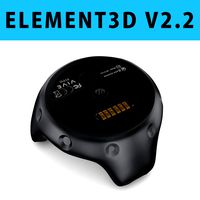
E3D -HTC Vive Tracker
...model e3d -htc vive tracker for download as max, obj, and c4d on turbosquid: 3d models for games, architecture, videos. (1190728)
3d_export
$7

sci-fi injector or tracker
... can be tracker, use as you want. pbr 4k contain: blend (includes high poly)/ dae / fbx / obj / stl / glowing injector + box
3d_export
$10
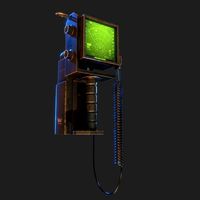
Motion Tracker Aliens
...er out moving objects from stationary background and then displayed them on the monitor as a series of contours of probable loci.
3d_export
$5

single axis solar tracker stand
...single axis solar tracker stand
3dexport
3d_export
$60
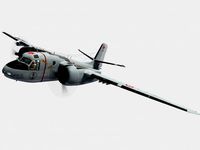
grumman s-2 f tracker
...ining in service with other air arms into the 21st century. argentina and brazil are the last countries to still use the tracker.
3d_export
$19

Chevrolet tracker 2021
...pport ticket and request for that. we can convert 3d models to: .stl, .c4d, .obj, .fbx, .ma/.mb, .lwo/.lws, .3ds, .3dm, .dxf/.dwg
3d_export
$25

emergency power with solar tracker
...cker
3dexport
this is a tool used to distribute electricity during an emergency disaster, it is recommended to use sketchup 2019
Fluorescence
3d_ocean
$6

Energy Bulb Fluorescent
...energy bulb fluorescent
3docean
bulb eco ecological energy bulb fluorescent lamp light lighting
energy bulb fluorescent.
turbosquid
free

Fluorescent lamp
...bosquid
free 3d model fluorescent lamp for download as blend on turbosquid: 3d models for games, architecture, videos. (1313789)
3d_export
$5

Fluorescent 3D Model
...fluorescent 3d model
3dexport
florasan light lamb fluorescent bulb white high poly
fluorescent 3d model husky 49990 3dexport
turbosquid
$14

Fluorescence Microscope
...l fluorescence microscope for download as blend, fbx, and obj on turbosquid: 3d models for games, architecture, videos. (1610738)
turbosquid
$2

Fluorescent light
... 3d model fluorescent light for download as max, max, and fbx on turbosquid: 3d models for games, architecture, videos. (1531043)
turbosquid
$39

Fluorescent Bulb
... available on turbo squid, the world's leading provider of digital 3d models for visualization, films, television, and games.
turbosquid
$30

fluorescent bulb
... available on turbo squid, the world's leading provider of digital 3d models for visualization, films, television, and games.
turbosquid
$30

Fluorescent light
... available on turbo squid, the world's leading provider of digital 3d models for visualization, films, television, and games.
turbosquid
$10

Fluorescent Starter
... available on turbo squid, the world's leading provider of digital 3d models for visualization, films, television, and games.
turbosquid
$2

Bulb fluorescent
... available on turbo squid, the world's leading provider of digital 3d models for visualization, films, television, and games.
Microscope
archibase_planet
free

Microscope
...roscope
archibase planet
microscope optical microscope
microscope n180314 - 3d model (*.gsm+*.3ds) for interior 3d visualization.
archibase_planet
free
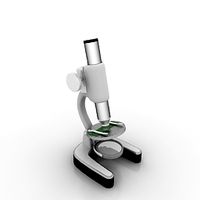
Microscope
...microscope
archibase planet
microscope medical facilities
microscope - 3d model for interior 3d visualization.
archibase_planet
free

Microscope
...microscope
archibase planet
microscope
microscope n031107 - 3d model (*.gsm+*.3ds) for interior 3d visualization.
archibase_planet
free

Microscope
...microscope
archibase planet
microscope laboratory equipment
microscope - 3d model (*.gsm+*.3ds) for interior 3d visualization.
archibase_planet
free
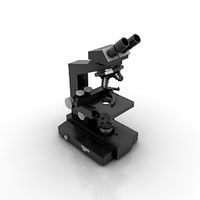
Microscope
...planet
microscope medical apparatus medical facilities
microscope n180608 - 3d model (*.gsm+*.3ds) for interior 3d visualization.
3d_ocean
$16

Microscop Toy
...microscop toy
3docean
game games microscop microscop toy play science toy
microscop model toy with materials
turbosquid
free

Microscope
...pe
turbosquid
free 3d model microscope for download as blend on turbosquid: 3d models for games, architecture, videos. (1607423)
turbosquid
$19

Microscope
...bosquid
royalty free 3d model microscope for download as max on turbosquid: 3d models for games, architecture, videos. (1514032)
turbosquid
$19
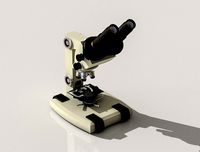
Microscope
...bosquid
royalty free 3d model microscope for download as max on turbosquid: 3d models for games, architecture, videos. (1514017)
turbosquid
$18

Microscope
...bosquid
royalty free 3d model microscope for download as max on turbosquid: 3d models for games, architecture, videos. (1176709)
Lab
3ddd
$1

Lab
...lab
3ddd
hkliving , lab
lab 13x13x17cm,
lab xl 36x36x32cm
3ddd
$1

Смеситель Lab
...смеситель lab
3ddd
barazza , lab
кухонный смеситель barazza;
модель lab.
3d_export
$5

Lab Tray
...lab tray
3dexport
lab tray 3d model that can be used in movies and games.<br>suitable for lab and hospital environments.
3ddd
$1

Lab Line
...lab line
3ddd
turbosquid
$149

Computer Lab
...squid
royalty free 3d model computer lab for download as lwo on turbosquid: 3d models for games, architecture, videos. (1676076)
turbosquid
$90

Crashed lab
...osquid
royalty free 3d model crashed lab for download as max on turbosquid: 3d models for games, architecture, videos. (1426371)
turbosquid
$5

Lab Table
...rbosquid
royalty free 3d model lab table for download as obj on turbosquid: 3d models for games, architecture, videos. (1703851)
turbosquid
$99

Kids Lab
...alty free 3d model kids lab for download as c4d, obj, and fbx on turbosquid: 3d models for games, architecture, videos. (1699149)
turbosquid
$19

Lab Flask
...y free 3d model lab flask for download as obj, fbx, and blend on turbosquid: 3d models for games, architecture, videos. (1245982)
turbosquid
free

Lab bench
...ree 3d model lab bench for download as jpg, obj, fbx, and stl on turbosquid: 3d models for games, architecture, videos. (1472590)
100
3ddd
$1

Life 100-100-48
...life 100-100-48
3ddd
life , журнальный
автор модели: aeroslon
turbosquid
$9

Landscape 100 X 100 m
... available on turbo squid, the world's leading provider of digital 3d models for visualization, films, television, and games.
3ddd
$1

100 Dollars
...100 dollars
3ddd
100 dollars текстуры в комплекте :-)
3ddd
free

Alexandria 100
...alexandria 100
3ddd
alexandria
мебель для ванной alexandria 100
3d_export
$100

phenom 100
...phenom 100
3dexport
дуже якісна модель приватного літака феном 100
3d_export
$12

100 books
...100 books
3dexport
design_connected
$4

100% Design
...100% design
designconnected
ligne roset 100% design writing desks computer generated 3d model. designed by jeffrey bernett.
3d_export
$5

hyundai h 100
...hyundai h 100
3dexport
hyundai h 100
turbosquid
$2

100 dollars
...bosquid
royalty free 3d model 100 dolars for download as 3ds on turbosquid: 3d models for games, architecture, videos. (1270987)
3d_export
$15

100 ik
...100 ik
3dexport
wat it is biytiful
